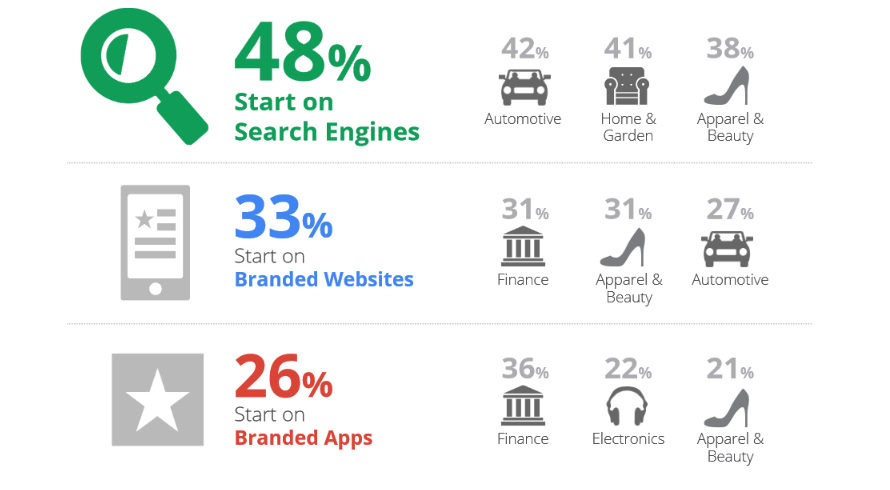For small business owners and marketers, the traditional marketing techniques that have been around for decades can be tough to break away from, but in the age of mobile devices, it’s a necessity. “The gradual decline of the PC industry, spurred on by the rapid rise of mobile computing, continues apace” (TechCrunch).
People are on their mobile devices all the time now, so it makes sense to gear marketing efforts to smartphones and tablets.
According to Pew Research Center, “Nearly two-thirds of Americans are now smartphone owners, and for many these devices are a key entry point to the online world. 64% of American adults now own a smartphone of some kind.”
Mobile marketing brings many advantages over traditional methods, such as lower costs, use of fewer resources, and campaigns that are much easier to track. But mobile marketing is no guaranteed success story.
To increase the chances of mobile marketing success implement the following tips.
-
Get to know your audience.
On the surface, getting to know your customer, sounds like a basic marketing strategy, yet with big data analytics this becomes a more exact science. You can understand individuals more deeply, what they prefer, how they prefer to consume information and what motivates them.
By delving into data collected from social media and other sources, you can truly pinpoint who would respond to your marketing campaigns.
-
Create personalized content.
Once you know who you are targeting, you can then go about creating content that appeals to them. Put simply, personalized content is effective content, something that reaches the consumer. This is especially important on mobile devices since people come across hundreds (or more) pieces of content each day.
-
Make mobile content digestible.
At the same time, most people don’t want to bother with content that takes a long time to understand. According to the Salesforce 2014 Mobile Behavior Report, “Mobile users care most about having seamless, easy access to content across all of their devices. Companies delivering on that content demand will win, yet currently, there’s abundant room for brands with high standards for their mobile experiences to lead the way.”
People may spend a lot of time on their smartphones and tablets, but they do so while scrolling through websites and email quickly. Make sure the personalized content is bite-sized, something that can be understood in just a few seconds, if possible. That doesn’t mean the content takes a dip in quality, only that it gets to the point quickly.
-
Optimize for email.
Believe it or not, the best way to get e-commerce sales from customers via mobile devices is through email. A recent study shows that email drove nearly 27 percent of e-commerce sales on smartphones as opposed to only around 20 percent on desktops.
So, when creating marketing content, finding ways to engage consumers via email is the most effective strategy to use. It’s definitely a channel that should not be ignored.
-
Think technology-forward.
New mobile devices are released to the market all the time. Those devices come with new capabilities and features, some which can greatly affect your mobile marketing efforts.
For that reason, you should always stay current with new technology and identify trends before they happen. New technologies usually represent new opportunities, and the intrepid marketer will look to take advantage of those opportunities right away.
-
Keep mobile search top of mind.
You’ll need to use correct keywords if your mobile marketing strategy is expected to take off. This helps get your content noticed in the midst of the competition.

Source: Google Mobile Path to Purchase Study Google’s mobile path to purchase report suggests “consumers are spending time researching on their smartphones (15+ hours a week), their research starts with a search engine (vs. a mobile site or app), proximity is important (69% expect businesses to be within five miles of their location), immediacy is key (more than half want to purchase within the hour) and mobile influences their purchase decisions (93% go on to buy).”
-
Create a mobile-first website.
Don’t ignore the impact of mobile devices on your company website. Any good mobile marketing strategy should take into account how your site shows up on a wide variety of mobile devices by using free tools like Screenfly.
Feel free to experiment with responsive web designs, keeping in mind that the site should still be engaging and easily accessible from a smartphone. The better the design, the better the response will be when reaching out to consumers.
With the rise of mobile devices all around the world, especially in the growth of bring your own device (BYOD) policies, marketers have a chance to connect with new customers in ways they may have only dreamed of before.
Mobile marketing can lead to some unique opportunities, but it also requires a good strategy to increase the chances of success. By following the above tips, marketers can craft the best campaigns geared to a specific target audience.
This article has been edited and condensed.
Rick Delgado is a technology commentator and freelance writer whose work appears on Wired, SocialMediaToday, and MakeUseOf. Connect with @ricknotdelgado on Twitter.
© YFS Magazine. All Rights Reserved. Copying prohibited. All material is protected by U.S. and international copyright laws. Unauthorized reproduction or distribution of this material is prohibited. Sharing of this material under Attribution-NonCommercial-NoDerivatives 4.0 International terms, listed here, is permitted.













